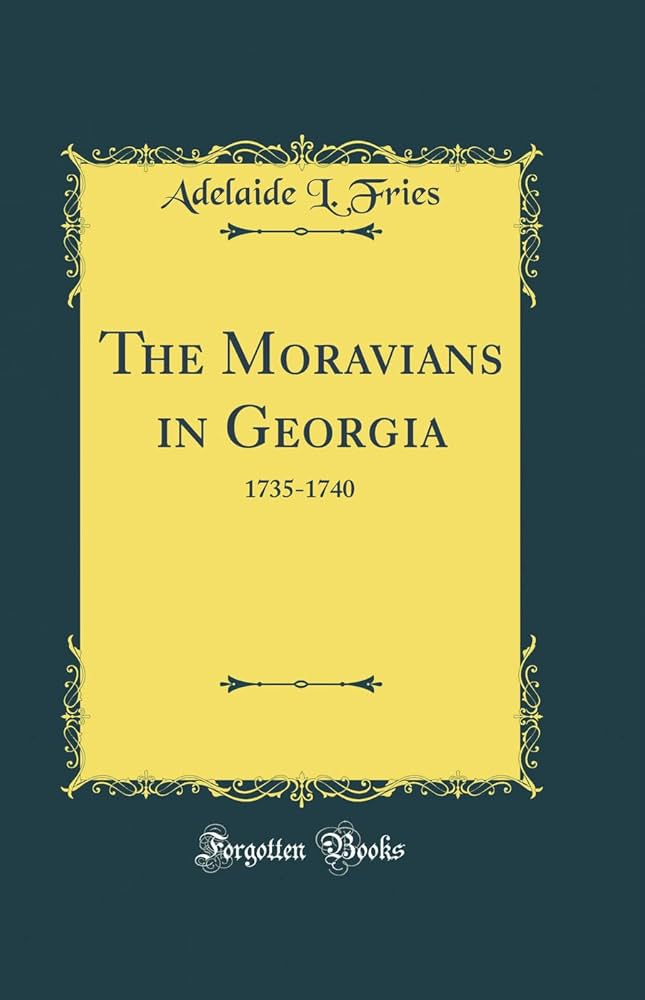Chapter IV — Reinforcements
byChapter IV — Reinforcements begins with a pivotal change in direction for the Moravian Church’s expansion efforts. By 1740, after careful reflection on earlier experiences, the Church leaders determined that Pennsylvania, rather than Georgia, would provide a more promising environment for their next missionary company. This decision arose from both practical and spiritual considerations, as Pennsylvania’s religious tolerance, growing German population, and fertile social conditions better aligned with Moravian objectives. Georgia, with its mounting political and cultural tensions, appeared less suitable for nurturing a stable religious settlement. The shift in destination reflected a larger pattern within the Moravian movement: adaptability without abandoning core convictions. Though it marked a retreat from their original plan, it opened doors for long-term influence in regions more receptive to their presence.
Back in Savannah, the settlers continued striving to realize their vision of communal life. They worked the land collectively, built shared housing, and organized daily tasks around spiritual rhythms. Their farm was modest but consistent, providing sustenance and unifying the group in purpose and practice. Beyond agriculture, skilled trades were pursued, such as carpentry and blacksmithing, which supported both the settlement and nearby communities. Interaction with neighboring residents brought opportunities to witness through work and worship alike. Despite occasional friction and cultural misunderstanding, the Moravians held fast to their goal: to live as a harmonious, spiritually devoted community amid a diverse colonial frontier. This blend of labor and faith became their defining feature in Georgia.
Though the experiment in communal living eventually gave way to more individualistic structures in later settlements, Savannah’s model offered valuable insight. The trials faced—scarcity of resources, friction with authorities, and internal disagreements—shaped how future Moravian communities would organize themselves. Lessons learned included balancing shared ideals with practical needs and maintaining identity without isolating from the broader population. Their experience illustrated that spiritual vision must be paired with flexibility, especially in unfamiliar or volatile contexts. As Moravian leaders expanded into other regions, they applied these insights, adjusting models while holding tight to their core values. Savannah’s influence was not erased by its decline but reframed as a foundational chapter in the Moravian narrative in North America.
The settlers’ economic contributions also should not be overlooked. Projects like brick making and linen weaving were not only practical but visionary, reflecting an attempt to create a self-sustaining society that upheld dignity through labor. These ventures connected them with wider markets, strengthened their settlement, and reinforced their reputation for industry and honesty. Even when projects fell short, the spirit of innovation remained, carrying over into later communities. Religious life was never separate from the work of their hands—it was embodied through it. By anchoring their daily existence in both spiritual discipline and craftsmanship, the Moravians exemplified a faith that functioned not just in church, but in field and forge alike.
Individuals such as August Spangenberg and David Nitschmann played essential roles in shaping the direction and resilience of the mission. Their leadership combined vision with pragmatism, nurturing both the spiritual growth and operational stability of the settlements. They encouraged open dialogue, guided difficult transitions, and remained firm in their convictions, even when external pressures mounted. Under their guidance, the Moravians cultivated not only crops and commerce but a culture of care and commitment that stood in contrast to many neighboring settlements. Their example inspired others, reinforcing the sense that the mission in Georgia, though temporary, was part of something larger and enduring. What they began in Savannah laid seeds that would flourish elsewhere, bearing fruit long after their departure.
This chapter in the Moravian story is not just about physical reinforcements or the redirection of personnel. It reflects the deeper idea that spiritual reinforcement—of faith, resolve, and purpose—is equally necessary. The Savannah mission may have faded, but the values it tested and proved continued to guide the Church in its unfolding American journey. Their presence, marked by cooperation and humility, left impressions on the region that extended beyond religious conversions or land ownership. In the quiet rhythm of their work, worship, and witness, the Moravians built a legacy of thoughtful devotion and communal strength, one that would resonate well beyond Georgia’s borders.

